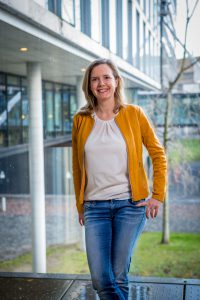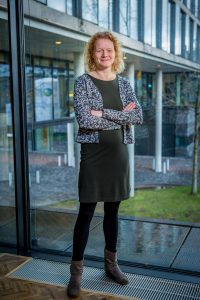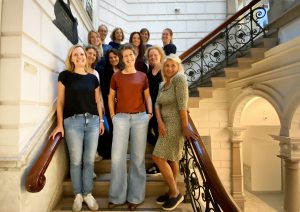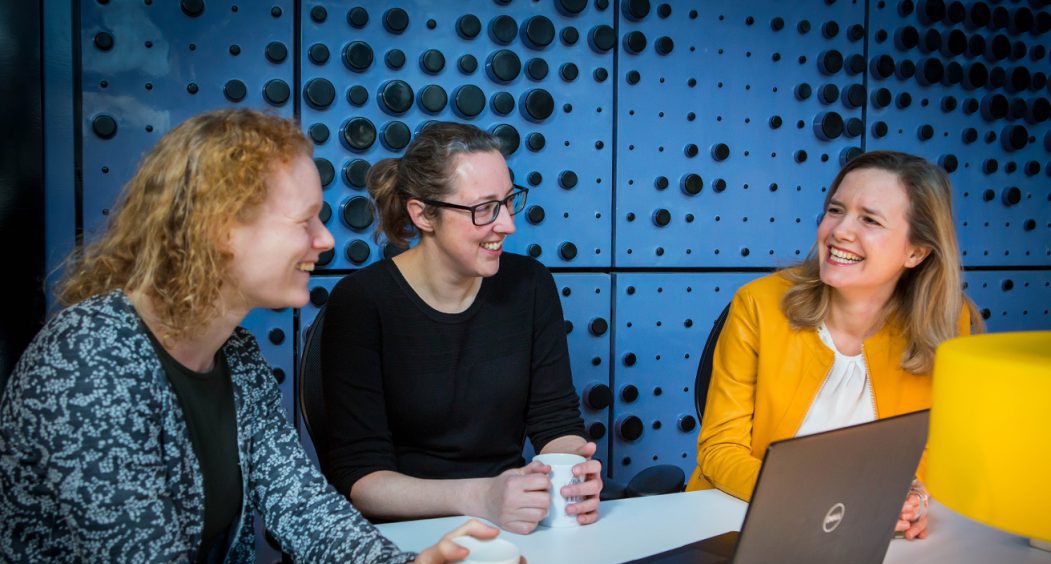
Visible Learning Trajectories Programme: improves structure and coherence of a curriculum
The power of collaborating teacher teams in curriculum alignment
With the Visible Learning Trajectories Programme (ZLP), UvA degree programmes address the (continued) development of a curriculum innovatively and effectively. ZLP analyses and optimises the structure and coherence of a curriculum through a methodology developed specifically for this purpose. This methodology consists of five meetings in which teacher teams, guided by experts, work towards an optimal alignment of objectives at different levels: from courses to learning trajectories to exit qualifications.
The result is an aligned curriculum that is supported within a degree programme. Additionally, there is a smart online visual overview of the structure and coherence of the programme and a more professional teaching team.
Explore the setup of the programme at the bottom of the page or read experiences from participating programmes.
The programme explained briefly
Tangible outcome
The outcome of the programme leads to an enhanced educational quality for students, achieved through:
- Improved structure and coherence within the curriculum using learning trajectories
- The professionalisation of teachers within the degree programme, enhancing their capacity to think at the curriculum level
- Strengthened and improved collaboration among teacher teams
- A smart online visual overview of the structure and coherence of a curriculum, serving as a valuable tool for teachers, education management, students and review committees
- A recorded representation of the curriculum’s structure and coherence, facilitating future modifications
Up-to-date and future-ready with the Learning Trajectories Methodology
Several elements are crucial for delivering high-quality education:
Coherence in a curriculum might seem obvious. Yet aligning learning objectives at the curriculum level can pose challenges. Teachers often focus primarily on course content and can sometimes neglect the broader curriculum aspects, possibly due to time constraints.
The Learning Trajectories methodology offers solutions through:
|
|
|
Programme directors Sandra Cornelisse and Ilja Boor:
Sandra: “Students often struggle linking study materials from a particular course to what they have previously learned in another course. They tend to see courses as separate elements, entering each one with a ‘blank slate’. And sometimes, students perceive certain materials as repetitive, without realising that it represents a deeper exploration of previously covered concepts. Consequently, they do not recognise that they are delving into a more advanced level during the new course. A visual overview of the learning trajectories and related study materials proves beneficial to students. It not only motivates them, it also provides context.”
Ilja: “Of course, this methodology also helps degree programmes. What sets this approach apart is that teacher teams, guided by experts, collaborate to develop a well-aligned and supported curriculum. We receive feedback indicating that the programme strengthens teamwork and commitment within teacher teams. It also contributes to the professional development of the teachers, by improving their ability to think at the curriculum level.” |
Visible Learning Trajectories tool: insight for all
The Visible Learning Trajectories tool provides a visualisation of the structure and coherence of objectives from the Learning Trajectories Methodology. This online tool visualises what is covered during the curriculum and at which level. Intended learning outcomes, learning trajectory objectives and exit qualifications are connected.
This offers students and teachers insight into the structure and cohesion of knowledge, skills and attitudes during the degree programme. For students, this insight plays a crucial role in self-management, motivation and academic success. Moreover, the degree programme can use the tool as a means of communication between teachers and students, as well as among teachers.
Expert Guidance
| In the Visible Learning Trajectories programme, two trainers with educational and didactic expertise, along with experience in the methodology, oversee each degree programme. They guide the process and offer feedback during and between meetings. They liaise with the programme director regarding the programme’s progress and outcomes. |
|
The team
| Programme leaders: | Sandra Cornelisse and Ilja Boor | |
| Programme coordinators: | Belle Jansen and Alexandra de Bruijne | |
| Trainers:
|
Annelous Milius, Beatriz Gimenez Gonzalez, Catharina Brandsma, Emma Wiersma, Imke Nabben, Jolanda Broex, Judith Gerritsen, Marijke Leijdekkers, Han Geluk, Monique Jongerius, Silke van Beekum, Tjitske Sijbrandij, Yorike Hartman, Yvonne Rijns, Esther Reefman
|
|
| Programme assistants: |
Bouke Boor, Cato De Veld, Evy Gort, Merlijne Reeuwijk, Nigar Kasirga |
Interested in learning more about the Visible Learning Trajectories Programme?
Explore the details below for more information about the programme. If you are interested in participating with your UvA degree programme, please don’t hesitate to send us an email. We would like to get in touch with you.
About the programme
The Visible Learning Trajectories Programme (ZLP) was initiated in 2017 by Ilja Boor and Sandra Cornelisse, who specifically developed the learning trajectory methodology for this programme. Between 2017 and 2022, nearly all Bachelor’s programmes within the Faculty of Science completed the programme. In 2022, the programme was made available to every faculty of the University of Amsterdam. As of mid-2023, 10 Bachelor’s and 3 Master’s programmes have completed the programme, and an additional 22 Bachelor’s and 15 Master’s programmes are currently in progress.
For an existing curriculum, the lead time for the Visible Learning Trajectories programme is 6 months. When developing a new curriculum, the programme runs concurrently with the development process. The implementation of the Visible Learning Trajectories Programme at a degree programme always begins with a kick-off meeting with the programme director.
The Visible Learning Trajectories Programme consists of:
| Start interview | The process begins with an interview with the programme director and the assembly of a core team of learning trajectory coordinators. |
| Five learning trajectories meetings | In these meetings, we identify the learning trajectories that comprise a curriculum and formulate objectives at the learning trajectory level. We visualise, analyse, and optimise the coherence and structure of all objectives by determining which curricular objectives and exit qualifications are connected to each learning trajectory and how the intended learning trajectory objectives are to be achieved. |
| Meetings with teachers & coordinators for each learning trajectory | In these meetings, core team members discuss the outcomes with course teachers and course coordinators within the curriculum. This ensures the involvement of all teachers in the degree programme, fostering support for the outcomes. |
| Evaluation | Upon completion, each programme receives an evaluation report. This report includes an assessment of the current status, based on a SWOT analysis per learning trajectory, and recommendations for an improvement plan. This improvement plan can potentially be executed in collaboration with the faculty TLCs. After three months, a follow-up meeting is held to evaluate the implementation of the outcomes. |
All UvA degree programmes can opt to participate in the Visible Learning Trajectories Programme voluntarily. The aim is that all degree programmes that are interested in taking part can do so. Bachelor’s programmes that have scheduled accreditation within two years are given priority. This includes Bachelor’s programmes that are currently undergoing curriculum revision or developing entirely new curricula. Bachelor’s or Master’s programmes seeking to future-proof their programmes are also welcome to apply.
Experiences of participating programmes
| “Completing the entire programme under the guidance of knowledgeable trainers gives more clarity on the structure of the programme for both students and teachers, as well as for review committees. The programme provided tools that facilitated this.” | “The programme makes it very clear where gaps and overlaps exist. Are there intended learning outcomes that are not reflected in any learning trajectory objectives? Or vice versa: are there intended learning outcomes that do not quite match exit qualifications and is there (un)desirable overlap in the curriculum? The programme brings all of these aspects into view.” | “This programme has provided a good overview of how our Bachelor’s programme is structured. It has allowed me to see how all the pieces interconnect to create the larger picture. As a lecturer involved in only a specific part of the programme, I had never fully grasped how my work connects with my colleagues’ efforts, and how it plays a crucial role in helping students gain comprehensive knowledge.” | |||||
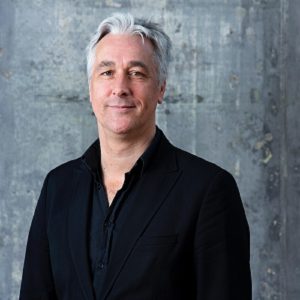 |
Ingmar Visser
Programme director of the Bachelor’s programme in Psychology |
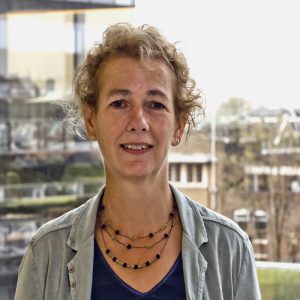 |
Annette Schrauwen
Programme director of the Master’s programme in International and European Law |
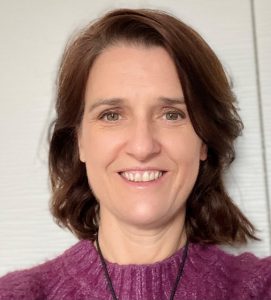 |
Paola Grosso
(former) Director of the Graduate School of Informatics (GSI) |
||
|
Programme director Maurice Koster from the Bachelor Econometrics & Data Science shares his experiences with the Visible Learning Trajectories Programme. |
Learning Trajectory coordinator Corine Boon from the Master Data Science & Business Analytics shares her experiences with the Visible Learning Trajectories Programme.
|
Contact us
Do you have any questions or comments? Please feel free to connect with us.






